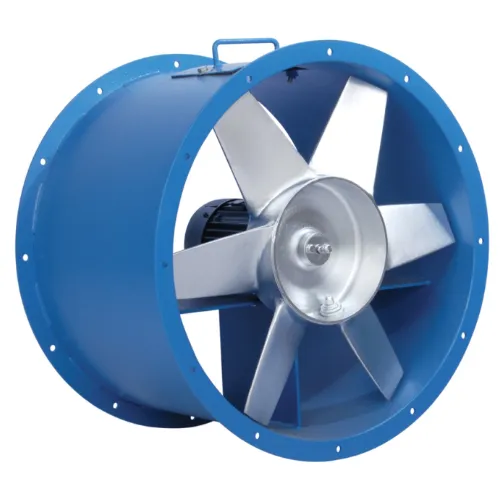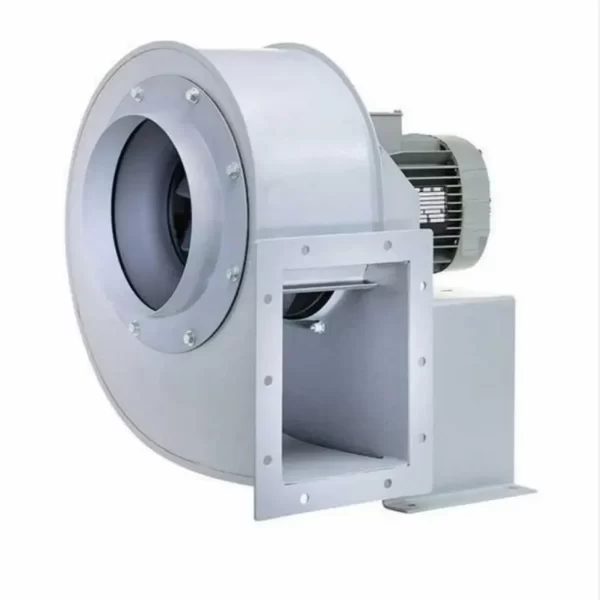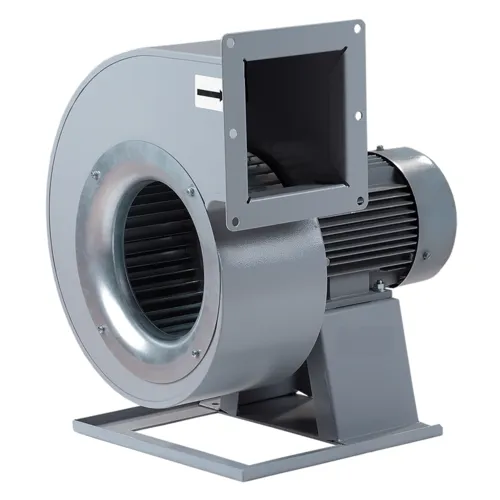Introduction to Working Principle of Axial Flow Fans
Axial flow fans, also known as propeller fans or axial fans, are widely used in various industries and applications. These fans are designed to move air or gas parallel to the fan’s axis, creating a unidirectional flow. Unlike centrifugal fans, which generate airflow by radial forces, the working principle of axial flow fans rely on aerodynamic principles to achieve efficient air movement.
Components of Axial Flow Fans :
Fan Blades: Axial flow fans consist of multiple blades arranged in a propeller-like configuration. These blades play a crucial role in generating airflow by exerting a propulsive force on the air or gas.
Motor: The motor serves as the driving force behind the axial flow fan. It powers the rotation of the fan blades and determines the fan’s speed and performance.
Housing: The housing or casing encloses the fan blades and directs the airflow in the desired direction. It also protects the internal components and contributes to noise reduction.
Inlet and Outlet Ducts: The fan is typically connected to inlet and outlet ducts, allowing for the controlled entry and exit of air or gas. These ducts help optimize the fan’s efficiency by minimizing air leakage and maximizing the flow path.
Working Principle of Axial Flow Fans :
Now that we’re familiar with the key components, let’s delve into the working process of axial flow fans:
Air Intake: The axial flow fan draws air or gas through the inlet duct, creating suction as the fan blades rotate. The rotating blades act as impellers, pulling in the surrounding air.
Air Acceleration: The working principle of axial flow fans, as the air enters the fan, the blades accelerate the airflow by exerting a propulsive force on it. The shape and angle of the blades are carefully designed to maximize this acceleration.
Air Propulsion: The accelerated air is propelled parallel to the fan’s axis, resulting in a unidirectional flow. The working principle of axial flow fans is continuous rotation of the fan blades maintains a steady flow, providing a constant stream of air or gas.
Pressure and Volume: Axial flow fans generate both pressure and volume. The pressure rise is relatively low compared to centrifugal fans, making them ideal for applications where a moderate pressure differential is required, such as ventilation systems.

Applications and Working Principle of Axial Flow Fans :
Axial flow fans find extensive usage in numerous industries and applications. Some common applications include:
HVAC Systems: Axial flow fans are widely employed in heating, ventilation, and air conditioning (HVAC) systems to circulate and distribute air throughout buildings.
Cooling Towers: These fans play a vital role in cooling towers by facilitating the exchange of heat between the cooling medium and the environment.
Industrial Ventilation: Axial flow fans are used in various industrial settings to exhaust harmful gases, control temperature, and maintain a safe working environment.
Agricultural Ventilation: They are utilized in agricultural facilities, such as poultry farms and greenhouses, to maintain proper air circulation and control humidity levels for optimal plant growth and animal welfare.
Power Generation: Axial flow fans play a critical role in power plants, particularly in cooling systems for generators and transformers. These fans help dissipate heat and ensure efficient operation.
Process Industries: Various process industries, including chemical plants, refineries, and manufacturing facilities, employ axial flow fans for tasks such as exhaust, fume extraction, and drying processes.
Data Centers: Axial flow fans are used in data centers to ensure proper airflow and cooling, preventing overheating of servers and equipment.
Automotive and Aerospace: In automotive and aerospace industries, axial flow fans are utilized for engine cooling, ventilation systems, and aircraft cabin comfort.
Wind Tunnels: These fans are essential components of wind tunnels used in aerodynamic research, allowing scientists and engineers to study the effects of airflow on different objects.
Sports and Recreation: Axial flow fans find applications in sports stadiums and indoor arenas for ventilation and maintaining comfortable temperatures during events.
Conclusion
In conclusion, the working principle of axial flow fans are indispensable devices for creating a unidirectional airflow in various industries and applications. Their working principle, driven by the rotation of fan blades, accelerates and propels air or gas parallel to the fan’s axis. With their efficient design and widespread usability, axial flow fans continue to play a vital role in ventilation, cooling, and air circulation systems across numerous sectors.



